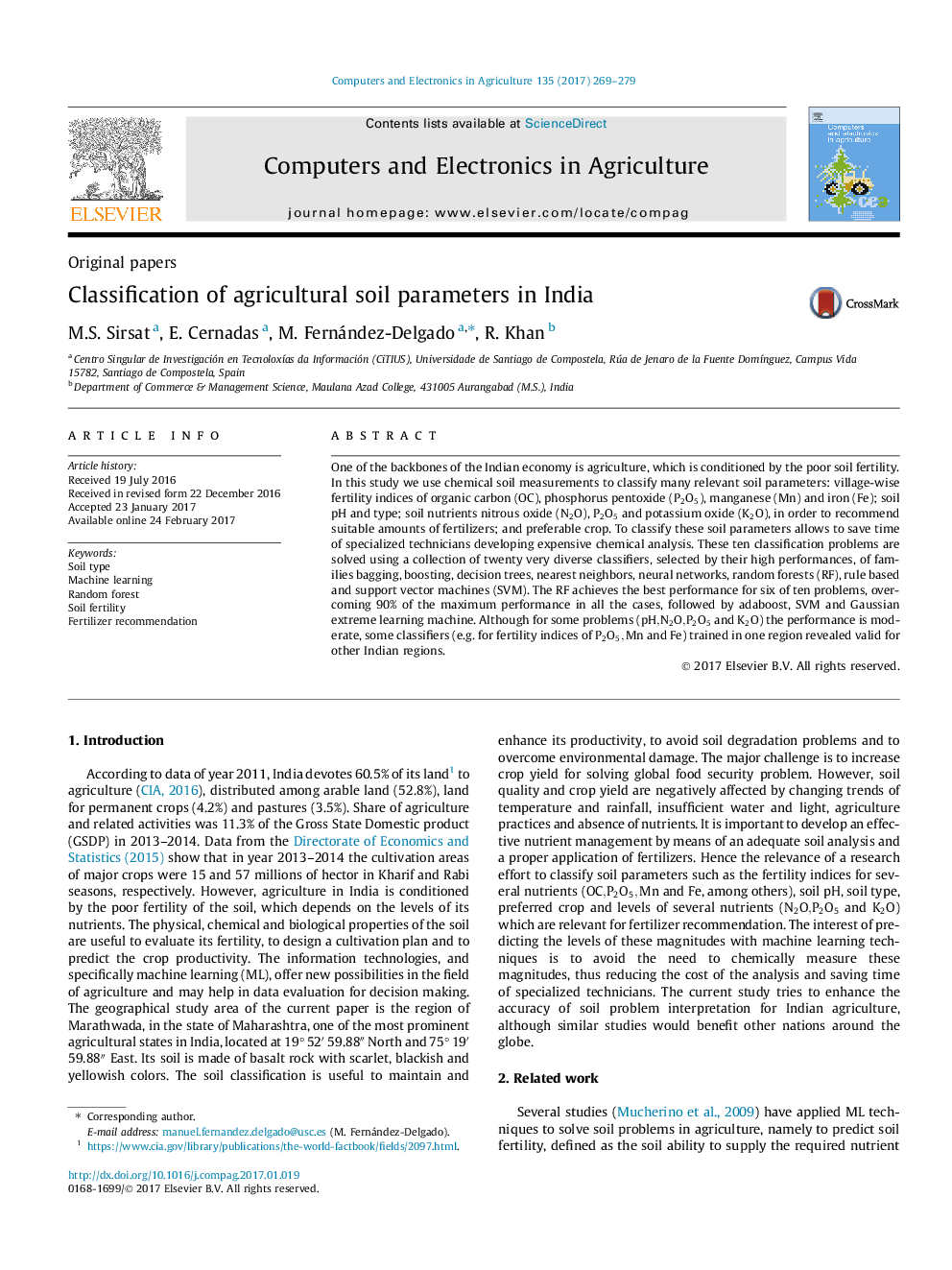| Article ID | Journal | Published Year | Pages | File Type |
|---|---|---|---|---|
| 6458797 | Computers and Electronics in Agriculture | 2017 | 11 Pages |
â¢Classification of soil data from Marathwada (India) avoiding chemical analysis.â¢Random forest overcomes 90% of the maximum kappa in all the classification problems.â¢Cohen kappa about 65-90% for classification of village-wise soil fertility indices.â¢Classification of: N2O, P2O5 and K2O for fertilizer recommendation; soil pH; soil type and suitable crop.â¢Some classification models remain valid across different regions in India.
One of the backbones of the Indian economy is agriculture, which is conditioned by the poor soil fertility. In this study we use chemical soil measurements to classify many relevant soil parameters: village-wise fertility indices of organic carbon (OC), phosphorus pentoxide (P2O5), manganese (Mn) and iron (Fe); soil pH and type; soil nutrients nitrous oxide (N2O), P2O5 and potassium oxide (K2O), in order to recommend suitable amounts of fertilizers; and preferable crop. To classify these soil parameters allows to save time of specialized technicians developing expensive chemical analysis. These ten classification problems are solved using a collection of twenty very diverse classifiers, selected by their high performances, of families bagging, boosting, decision trees, nearest neighbors, neural networks, random forests (RF), rule based and support vector machines (SVM). The RF achieves the best performance for six of ten problems, overcoming 90% of the maximum performance in all the cases, followed by adaboost, SVM and Gaussian extreme learning machine. Although for some problems (pH,N2O,P2O5 and K2O) the performance is moderate, some classifiers (e.g. for fertility indices of P2O5,Mn and Fe) trained in one region revealed valid for other Indian regions.
